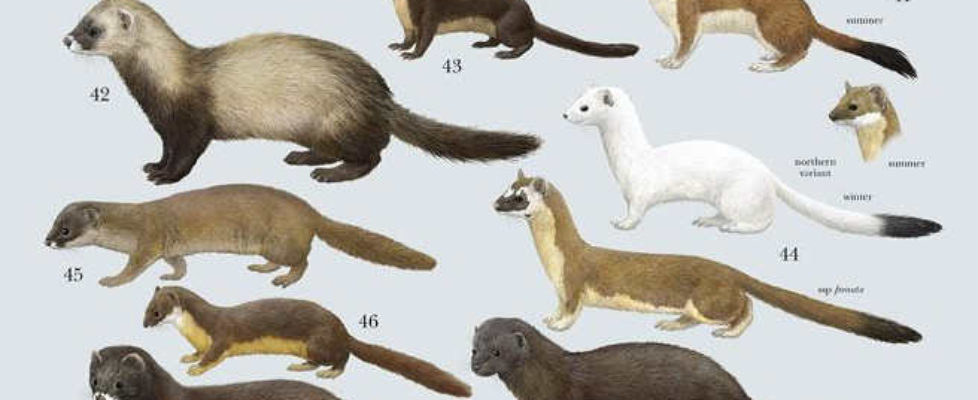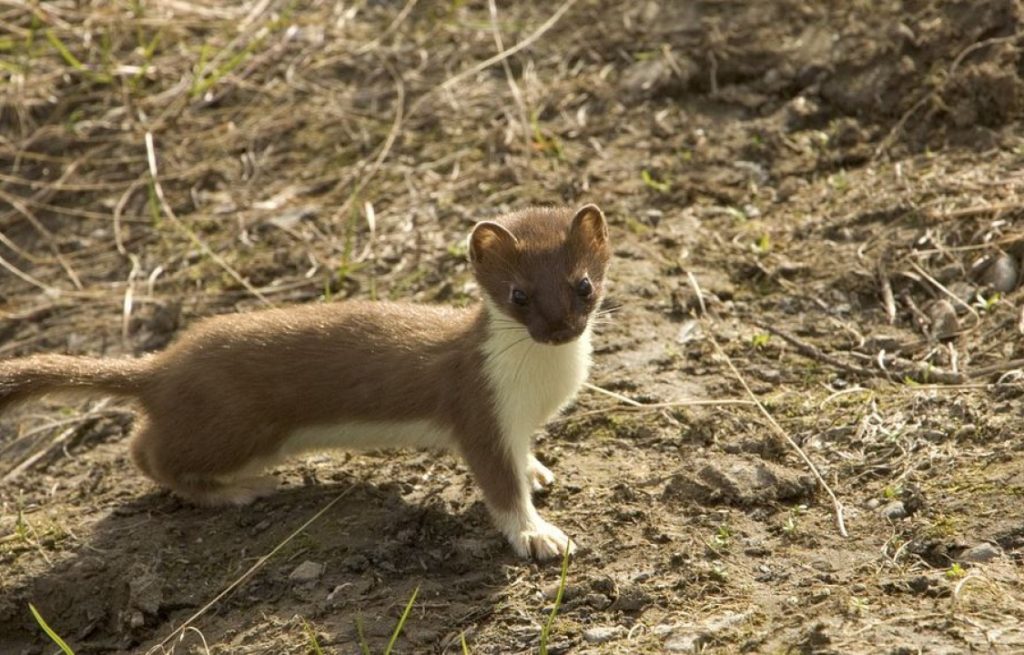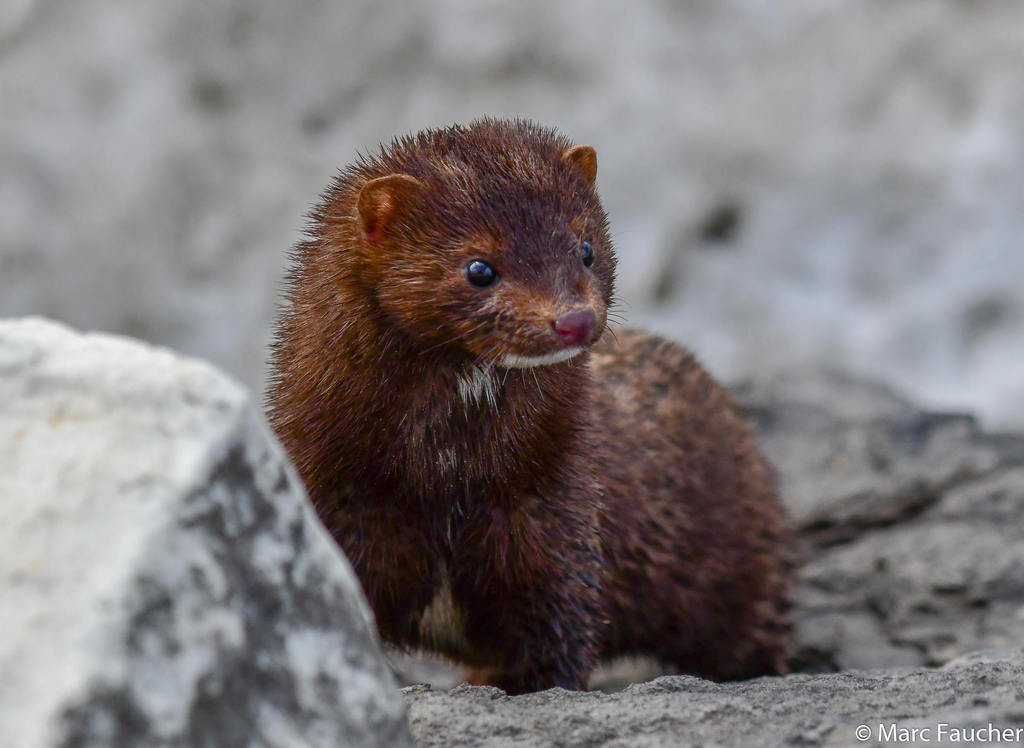Small, Fast, And Fearless
My wife and I were walking along a familiar path in Rockefeller State Park when we glimpsed a sudden movement at the edge of the trail. A small animal, something quick, agile, and unpredictable, dashing around on the forest floor so quickly it was hard to focus on.
What on earth was it? My brain cycled quickly through the possibilities. Not a mouse, mole, vole, or rat. Maybe a Red Squirrel? No: Aside from the size, the little creature at our feet—pausing for a moment to stand on its hind legs and glare at us, showing off its white belly—was all wrong for a squirrel.
Then the animal dove into a pile of brush, and its speed and strange, almost snakelike motion revealed the answer. It was a Short-tailed Weasel, just one of six members of the family Mustelidae native to New York. Its local cousins, the Long-tailed Weasel, American Marten, Fisher, American Mink, and North American River Otter, can also all be seen in the Hudson Valley.
Can be seen, but rarely are. With the exception of water-loving River Otters, which sometimes appear—as if out of nowhere—in bold family groups in the Hudson River and the region’s lakes and reservoirs, mustelids are often extraordinarily wary. Weasels, Martens, and Fishers tend to stick to dense woods, while Mink prefer the forested edges of remote ponds. The truth is, if you’ve spent any time in the woods, you’ve likely been observed by many more mustelids than you’ve ever glimpsed.
Mustelids are native to every continent but Australia and Antarctica. Unlike the species in our region, members of the family can be found in a wide variety of habitats: Badgers, for example, prefer grasslands, Wolverines the frozen tundra, and aquatic Sea Otters the kelp forests of the Pacific Ocean.
Regardless of their habitat, though, nearly all mustelids share some essential characteristics, the ones we saw during our brief weasel encounter. Most are quick, agile, aggressive, and absolutely fearless. Together, these attributes make them peerless hunters, pound for pound (or ounce for ounce) among the fiercest of all carnivores.
Much else about mustelids’ life story remains little known, however. They are hard to find and hard to study. Even radio collars (a go-to for field researchers hoping to follow elusive species in the wild) don’t usually work on weasels and other small members of the family. The problem: the animals’ extraordinarily supple bodies allow them to wriggle easily out of the collars.
Scientists do know, however, that the animals’ relentless energy requires constant refueling. Weasels’ metabolism is extravagantly demanding (their hearts beat at an astonishing 350-400 beats per minute), which means that each day a single individual must consume a third to half its body weight in food.
This constant need for fuel means that weasels can’t wait patiently to ambush their prey, as most wild cats do—doing so would take too much time. Nor can they pursue their prey until it slows or drops from exhaustion (a method often used by wolves and other wild dogs), because this would expend too much energy.
Instead, weasels roam their landscape and—upon seeing potential prey—attack it without hesitation, depending on their speed and agility to end the chase quickly. (And nearly anything they encounter can be a target; weasels will take on rabbits ten times their weight.) They then quickly immobilize their prey by severing its spinal cord with a single bite to the back of the head.
Weasels have evolved other distinctive—and controversial—habits to cope with their constant need to eat. Unlike many carnivores, which demand fresh meat, they often kill far more than they can eat in one sitting, caching the rest in “larders” (often found in burrows or rockpiles). The ability to store food today means that they might not starve tomorrow.
Unfortunately weasels can’t always tell wild prey from domestic. This has made them notorious among farmers for raiding henhouses and killing all the hens inside.
This reputation is at least partly unfair, as studies have shown that rats turn out to be the real culprit in many cases. In addition, weasels tend to keep farmyards and buildings clear of rodents, which carry disease and are extremely destructive to crops.
And even when weasels are responsible for killing chickens, it’s important to remember that they’re filling their larders, not engaging in purposeless slaughter. (Not that this distinction is any consolation to the farmer.)
Regardless, weasels’ hunting habits—along with their admittedly unsettling speed, snakelike movements, and ability to get into seemingly predator-proof places—have made their common name into a common insult. “Weasel” has come to refer to sly, sneaky, untrustworthy people, ones who will betray you with “weasel words” as they take advantage of you. You should never trust weasels…or even take your eyes off them.
While we weren’t concerned about betrayal that day in Rockefeller State Park, we did find it hard to take our eyes off the one and only Short-tailed Weasel we’ve ever seen there. But that was because we were watching a tiny, glorious predator, perfectly adapted to survival in the environment we were fortunate enough to share. And, even more impressively, it was a member of a fierce, independent family that has somehow managed to survive—and even thrive—in our crowded, human-dominated world.
Copyright © 2021
By Joseph Wallace





